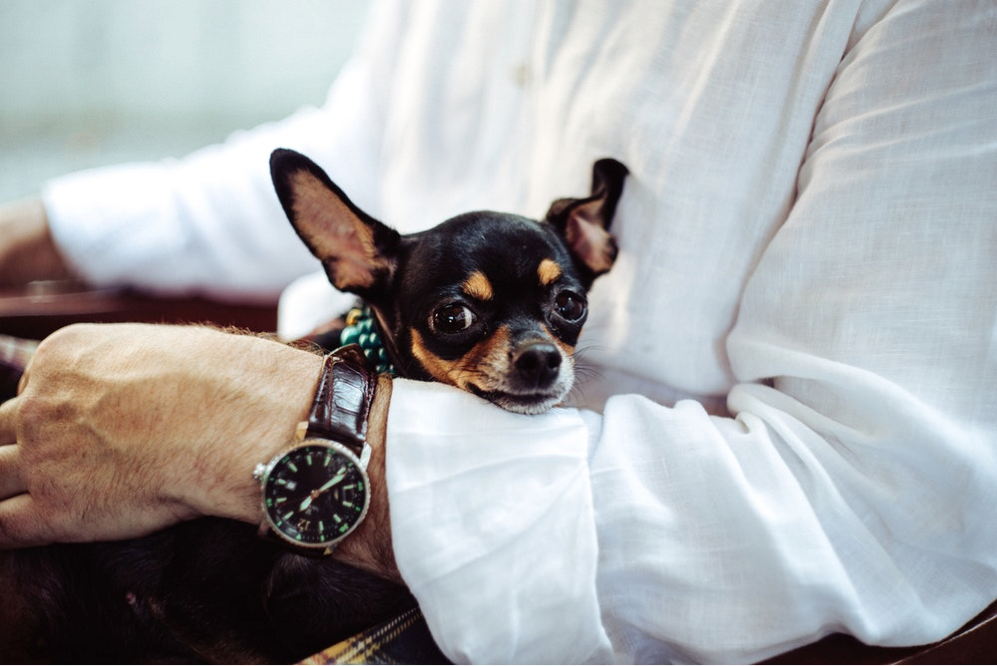
First, it really is ok to cry over any lost Reese’s peanut butter cups… They are my favorite! But if you’re asking “What happens if my dog eats my Halloween candy”, you may have another problem at hand.
After you discover your dog ate Halloween candy, begin asking yourself these important questions.
- How much candy was actually consumed?
- How much was chocolate candy?
- Dark or milk chocolate?
- Nuts or no nuts?
- Did any candy contain xylitol, a common artificial sweetener, or raisins?
- Are the wrappers gone as well?
- Is your pet exhibiting any abnormal behaviors or showing signs of illness?
Once you have obtained as much information as you can, call the Pet Poison Helpline at 1-888-222-1222. Veterinarians staffed 24/7 at the Pet Poison Helpline specialize in toxin exposures. They are well-equipped to formulate the best plan of action.
More often than not they will inform you your pet has NOT consumed a toxin in sufficient quantity to cause concern. Other times they direct you to our hospital for treatment.
Treatment often involves making your pet throw up the offending substance and this is most safely done under veterinary supervision. In fact, some substances can cause severe damage to the esophagus if vomited back up. A veterinarian will be able to determine if inducing emesis is safe your your pet.
After inducing emesis, hospitalization may be indicated. Veterinary hospitals can provide intravenous fluid therapy, activated charcoal, and monitoring of blood chemistry values. Longwood Veterinary Center assists with pet emergencies during our regular business hours. If you have a pet emergency, Longwood Veterinary Center not only offers excellent doctors and nursing staff, but also:
- Comprehensive In-House Diagnostic Blood Testing
- Digital Radiology
- Oxygen therapy
- Blood transfusion capability
- Complete In-House Pharmacy
- Multi-modal pain management
- 24-hour ICU nursing care (on case by case basis)
- Surgical services
If you find yourself with an after hours emergency, please contact Pinnacle Veterinary Specialists, The Veterinary Specialty Center of Delaware (Blue Pearl), Blue Pearl Malvern, The Matthew J. Ryan Veterinary Hospital of the University of Pennsylvania, VRC, or PETS – Pet Emergency Treatment and Specialties.
What is in chocolate that makes it so toxic?
Chocolate contains two potentially toxic substances theobromine and caffeine. Both have effects as a diuretic, cardiac stimulant, blood vessel dilator, and smooth muscle relaxant. Dogs are unable to metabolize theobromine and caffeine as well as people, this makes them more sensitive to the chemicals’ effects.

How much chocolate ingestion can cause a problem?
The amount of toxic theobromine varies with the type of chocolate. The darker and more bitter the chocolate, the more dangerous it is to dogs. Baking chocolate and gourmet dark chocolate are highly concentrated and contain 130-450 mg of theobromine per ounce. Common milk chocolate only contains about 44-58 mg/ounce.
White chocolate barely poses any threat of chocolate poisoning to dogs. It contains only 0.25 mg of theobromine per ounce of chocolate. However, keep in mind that dogs can still get sick from all the fat and sugar. To put this in perspective, a medium-sized dog weighing 50 pounds would only need to eat 1 ounce of baker’s chocolate, or 9 ounces of milk chocolate, to potentially show signs of poisoning.
What are the signs of chocolate toxicity?
Clinical signs depend on the amount and type of chocolate ingested. For many dogs, the most common clinical signs are vomiting and diarrhea. More severely affected animals show increased thirst and urination, panting or restlessness, and an increased heart rate.
In severe cases, muscle tremors, seizures, and heart failure may occur. Clinical signs of chocolate poisoning take several hours to develop and may last for several days due to the long half-life of theobromine.

What is the treatment for chocolate toxicity?
Treatment depends on the amount and type of chocolate consumed. If treated early, removal of the chocolate from the stomach by administering medications to induce vomiting and administration of activated charcoal to block absorption may be all that is necessary.
Theobromine is re-absorbed from the bladder. Dieresis via intravenous fluids to speed urinary excretion is necessary to prevent this. Dogs ingesting chocolate should be closely monitored for any signs of agitation, vomiting, diarrhea, or cardiac issues.
While a trip to the ER is scary, that’s not the kind of fun we want you to enjoy this Halloween. Keep the candy out of reach in tall cabinets or locked pantries! Have a happy and safe Holiday!
Written By: Tara Corridori, LVT
Edited By: Dr. Corrina Snook Parsons VMD
Information Obtained By: vcahospitals.com
